Women in the Arts
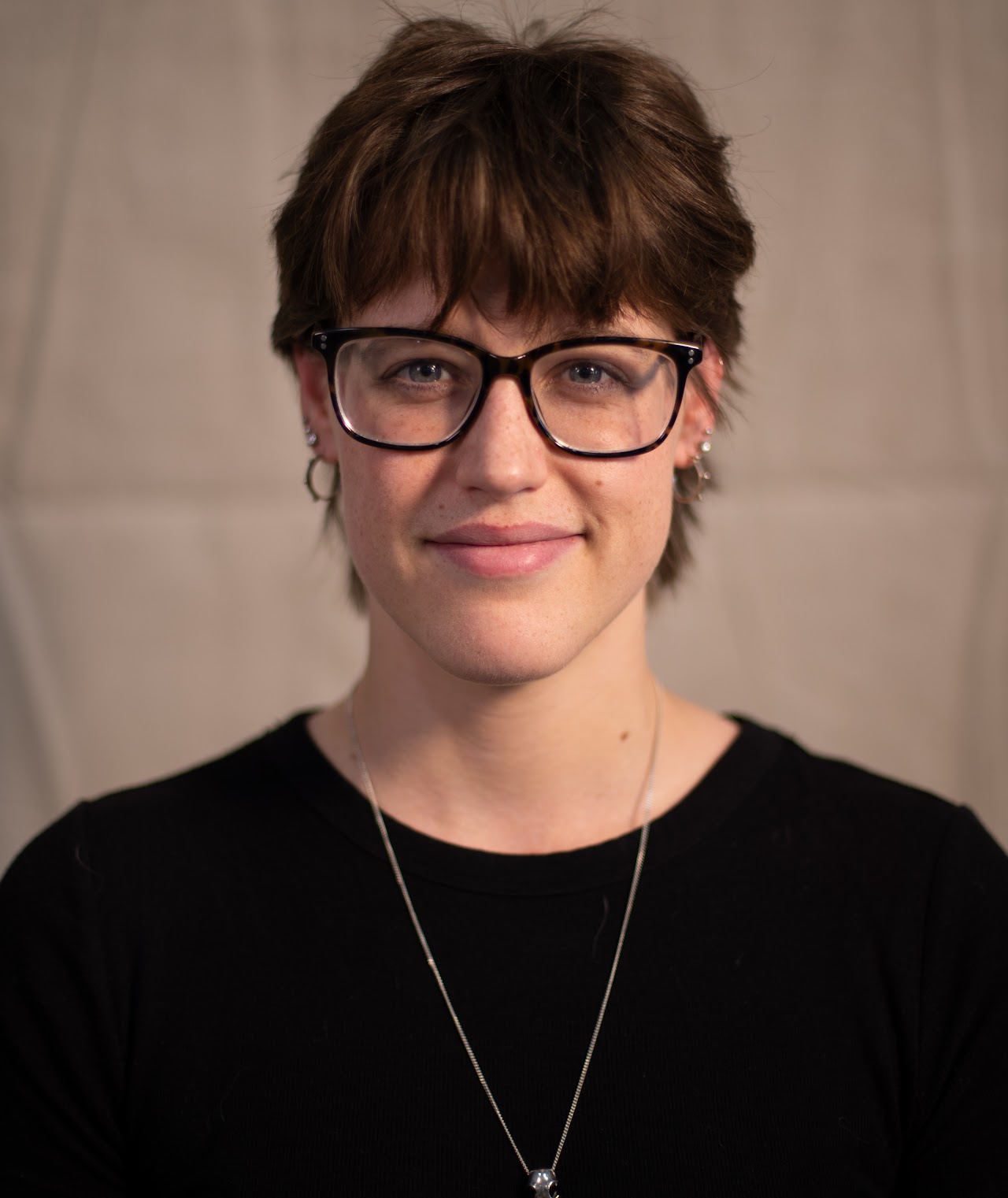
Meet SheROCKS 2026 Artist: Emily Alff
With a background in broadcast journalism and years spent documenting high-intensity moments across Washington, DC and beyond, Emily Alff brings a storyteller’s instinct to every shot she composes. Her work spans protests, black-tie events, public celebrations, and intimate portraits, yet the throughline remains her ability to capture connection. In this SheROCKS 2026 Artist Q&A, Emily shares the rituals, experiences, and values that shape her perspective behind the lens.
Q: Your background in broadcast journalism gives you a unique lens on storytelling. How has that shaped the way you approach photography today?
Emily: In my career as a news and video producer, I’ve spent almost a decade learning how to identify what’s important to a story and what value the story itself brings. Those skills make me sharp in the field with my camera. I’m able to quickly react and chase a scene others haven’t seen yet.
Being a producer has also helped me define my own style! I have personal preferences around aesthetics, and that translates into my photography. As a result, I aim to not only capture the moment, but to capture it cinematically. I create what I also enjoy.
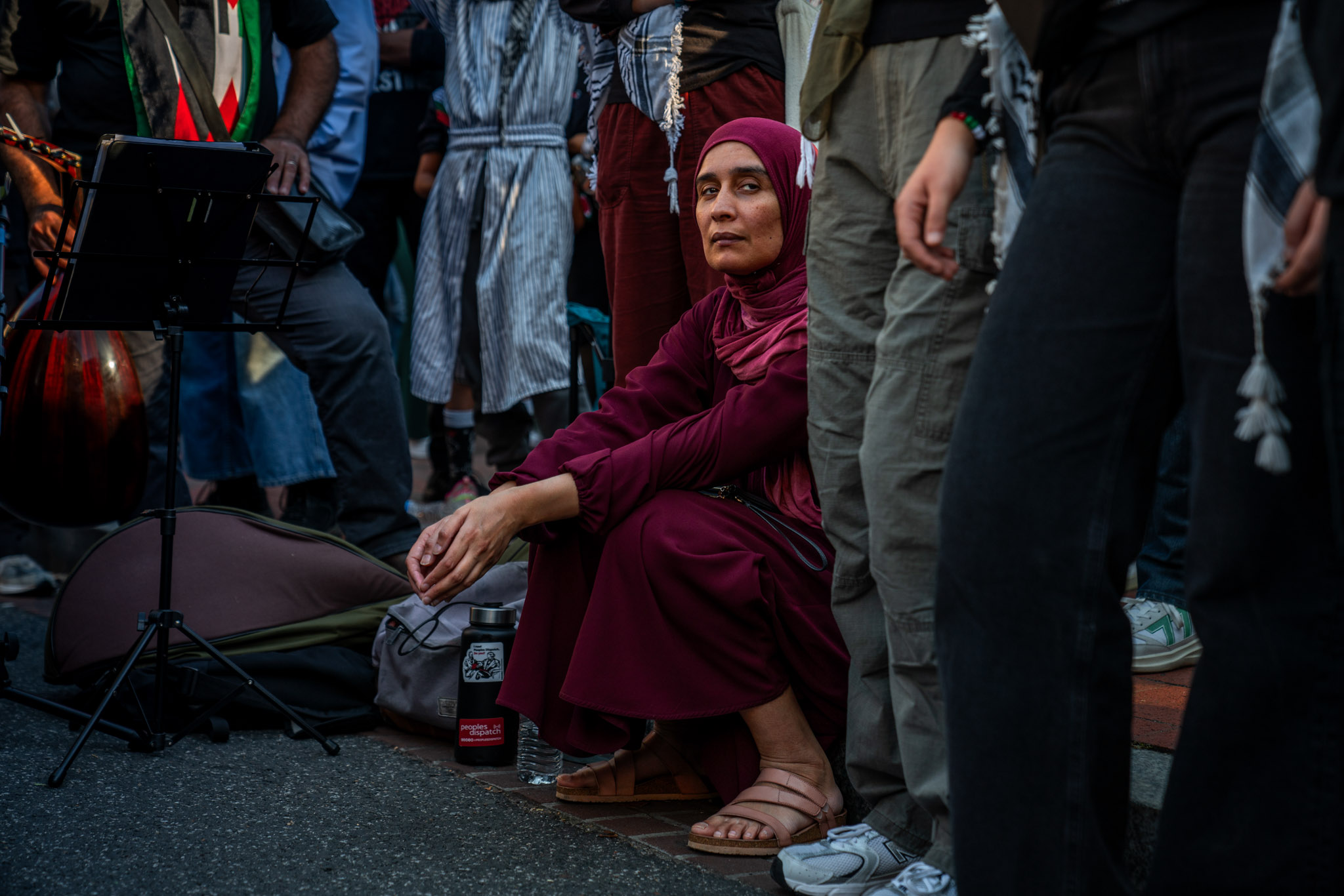
Q: You’ve photographed everything from protests to high-society events. What draws you to such a wide spectrum of human experiences, and how do you shift your perspective between them?
Emily: I’m drawn to high energy -- whether that be in a protest, a gala, or a concert. I love the feeling of crowds moving, voices rising, emotions flowing -- it fuels me. But inside that high energy, I always look for the smaller moments that others may have missed: the texture of rain on someone’s cardboard sign, the silhouette of a father and daughter taking a rest from the crowd, the light hitting a pinned sign on a protester’s clothes. In those details, I find photos that show how we’re really human.

Q: When you’re documenting a moment in real time, what’s the first thing you look for, the emotion, the composition, or the story unfolding?
Emily: I always look for moments of connection -- what is the relationship between all the elements in my frame, and how does the viewer, in turn, relate to them?
Q: Photography in DC comes with its own rhythm and energy. How does the city influence your creative process or the subjects you’re most drawn to?
Emily: People are often surprised to hear that anyone “actually lives” in DC. As a transplant myself, I can empathize with where they’re coming from. When I moved from Houston in 2019, I really struggled to adjust. To me, the city felt too small, the cars drove too slow, and the people were too stuffy. It took several years for me to really discover and appreciate the city on its own terms. But after nearly four years of living in the District, I’ve seen the resiliency, the strength, and the passion of DC residents -- and I’m drawn towards those kinds of stories. Just as I want to take photographs that show a DC beyond the Capitol, I also want to show how any community moves beyond others’ expectations. As a result, I’m always trying to find the unexpected angle, the interesting perspective to show how people exist in all their realities.
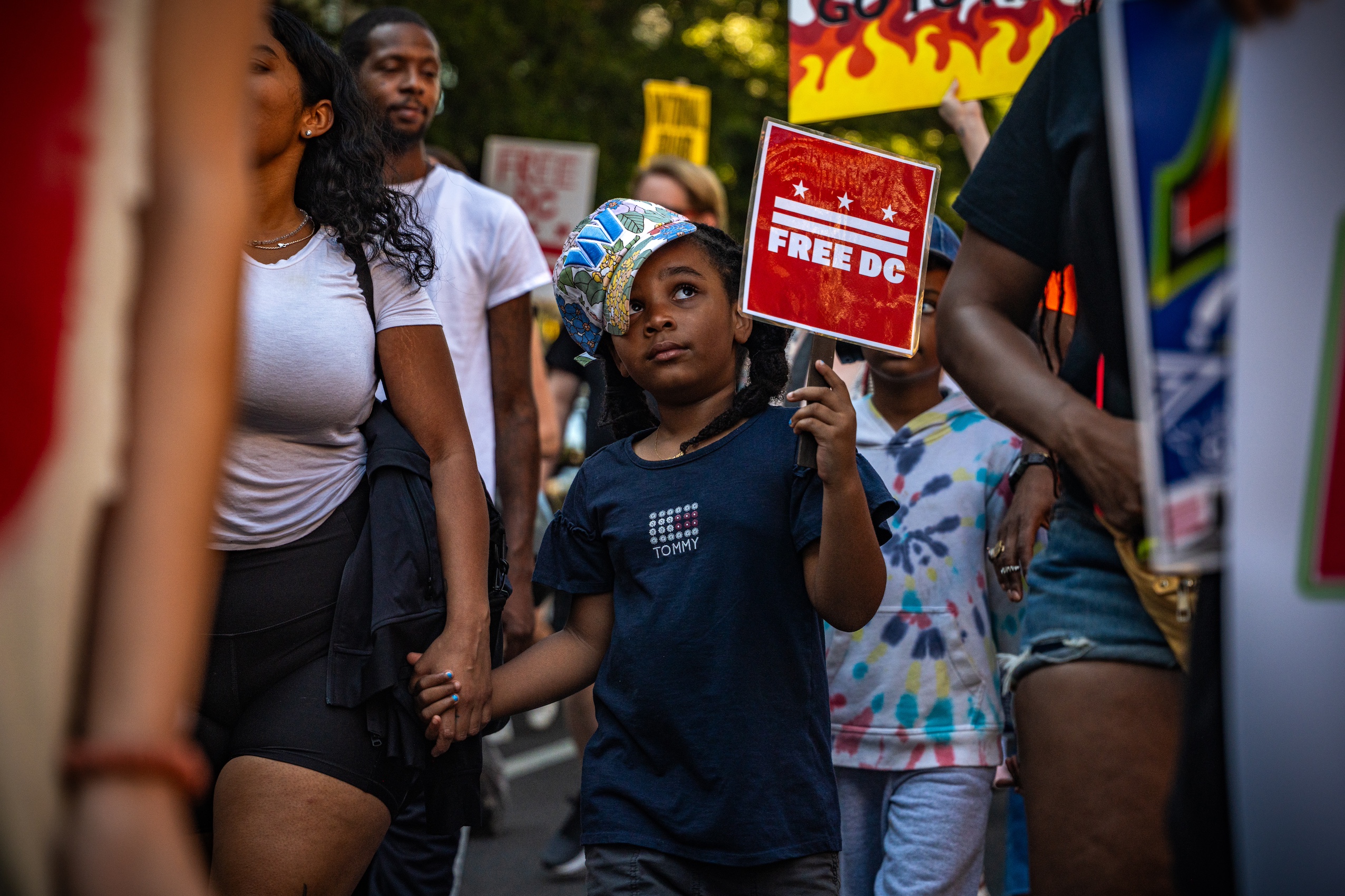
Q: What’s a story you’ve captured recently that stayed with you longer than expected?
This past June, I had the opportunity to photograph New York City’s Dyke March. The protest itself is already deeply moving, but the march ends with a spontaneous topless dance party in Washington Square Park. Every dark moment since, I’ve thought about the queer joy and love in that water fountain. I’m honored to have had the opportunity to see and document dykes so naturally and openly, and I especially hope the photos I capture create a personal connection for any viewer, beyond this specific queer community in New York City.
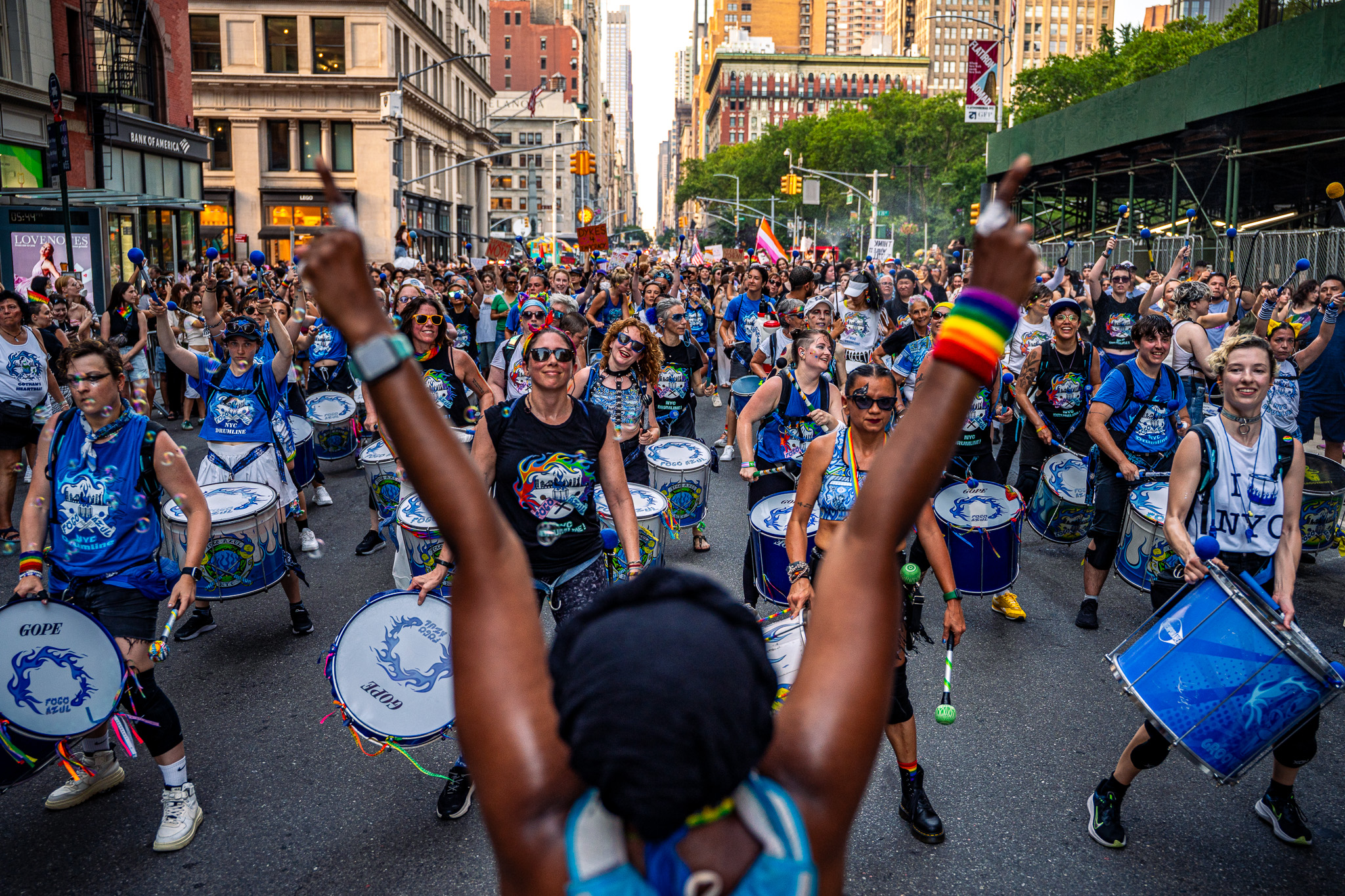
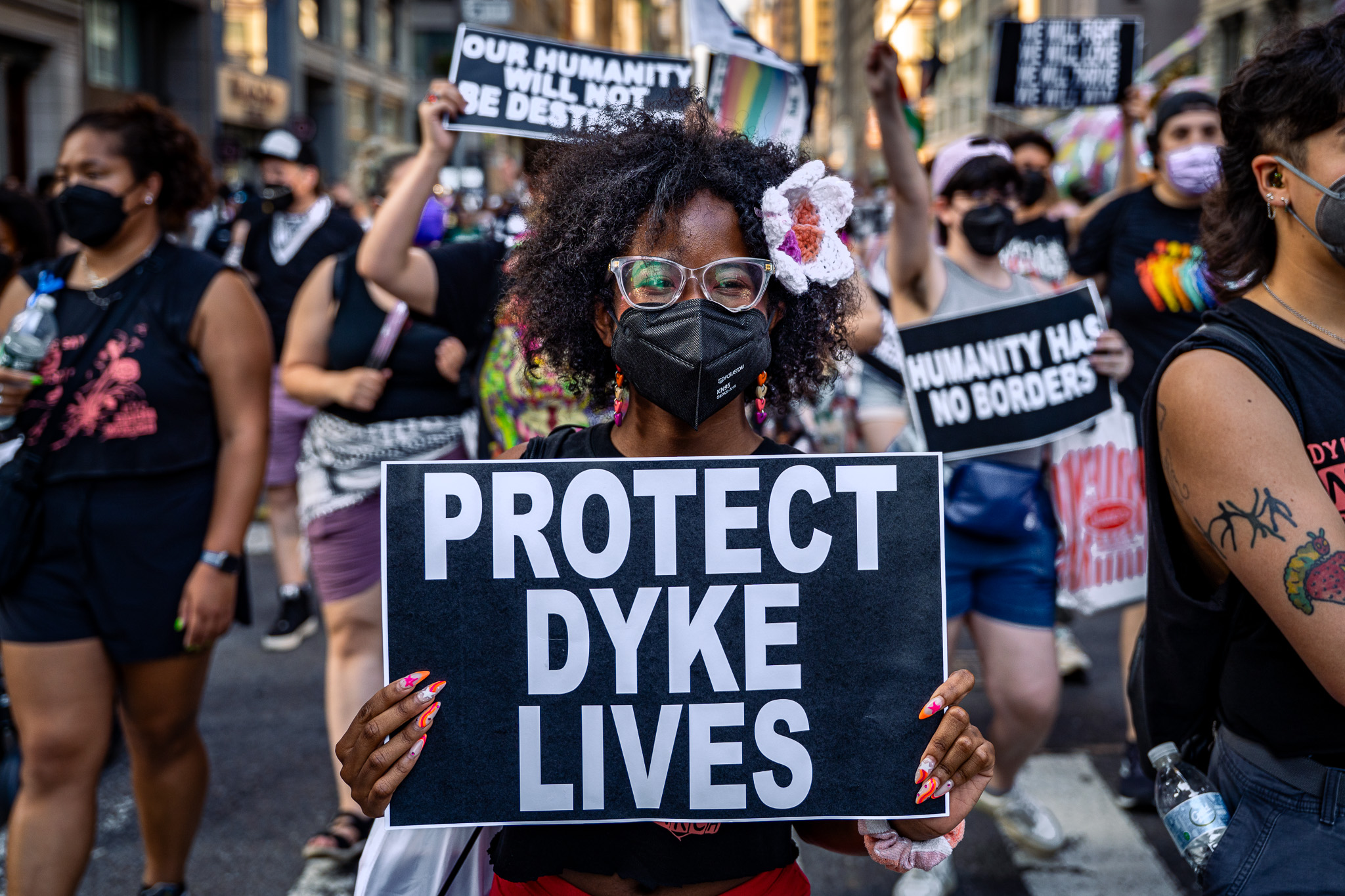
Q: Your work spans both public and intimate spaces. How do you build trust with subjects whether in the chaos of a protest or one-on-one session?
Emily: When I’m photographing, especially in protests, I try to build trust as quickly as I can: I make deliberate eye contact, I come with curiosity and ask sincere questions, and I actively listen to my subjects. These moments are brief -- I’m often walking backwards with a crowd, and my subject is trying to focus on the march itself -- but it’s important for me to show how seriously I consider each of my frames. Photographers “take” photos, and each image isn’t something we’re owed. I try to make my intentions to document as clear as possible, so that my subjects also feel comfortable while sensing the importance of the moment.

Q: Outside of photography, your love for books, thrifting, and walks through the city feels very observational. How do those personal rituals fuel your artistic eye?
Emily: I’m endlessly fascinated by the stories we just can’t know. When I’m holding a secondhand book or thrifting for a sweater, my imagination races to picture the lives it may have had before it got to me. The feeling motivates me even more to tell stories and to discover the lives of others.
Q: Your portfolio reflects a deep curiosity about people. What do you hope viewers understand or feel when they encounter your images?
Emily: On a daily basis, our screens are flooded with media and images, to an overwhelming extent. I hope viewers of my work see something outside the norm or something unexpected that makes them pause.
Rapid fire: Your camera bag go-to not including your camera?
Sunscreen! I know my limits.
Q: What are you most excited for audiences to experience when they see your work at the March 2026 SheROCKS showcase?
Emily: I want my audience to experience a moment of immersion. In my work, I strive to create images that create the feeling of “being there” for a distant viewer, so I hope each person feels as if they can bear witness to the image.
I’m also excited to experience an audience experiencing my work. Particularly in the digital age, being a photographer means publishing your photos to an internet void, never being able to see how it's received through the other side of the screen. In that way, I’m excited for the chance to participate as a witness myself.

Ai Makita on Animism, AI, and the New Materiality of Her Latest Work 'Metabolizing Machine'
In 2011, a tsunami following a 9.0-magnitude earthquake flooded the Fukushima Daiichi nuclear power plant in Japan. Causing the cooling systems to fail and power outage, engineers were left scrambling to resolve what had led to one of the most devastating nuclear emergencies in Japan’s history.
Multiple explosions caused radioactive fuel to spread across the atmosphere. This reactor meltdown subsequently caused increased radiation exposure and long-term effects that will have an adverse impact for years to come—on people, quality of life, environment and more.

“Machines were created to enrich human life, yet they also have the capacity to become tools of destruction. The Fukushima nuclear disaster made me feel this very viscerally,” said visual artist Ai Makita, remembering the events that took place.
“I was already interested in philosophy, but after the disaster I began studying the history of humans and technology through Heidegger, Arendt, and Aristotelian thought, she said. Reflecting on how the event reshaped her understanding of humanity’s relationship with machines and her own artistic development, she continued, “I started to question where our current rapid technological development might ultimately lead. There is a persistent sense of fear toward technology within me, and that fear fuels the imagination in my paintings.”

In this Q&A with Makita, we explore one of her most recent exhibitions, Metabolizing Machine, and learn more about her artistic exploration and discovery as she continues the discussion around the complex relationship between humans and machines through her work.
Timea Faulkner: Your paintings begin with photographs of machine parts and evolve through AI interpretation before you return them to physicality with paint. What draws you to this cyclical dialogue between hand and machine?
Ai Makita: The internet gradually became widespread when I was in middle school, so my generation lived in this interesting period where the digital world and the physical world began to merge. For me, physicality—material presence—has always been essential to making artwork. Yet at the same time, I felt something undeniably real existing beyond the digital screen. I still carry that dual awareness today, and it shapes the way I work.

Timea Faulkner: You’ve described moments where the AI misunderstood your prompts, leading to unexpected imagery. Do you see these “miscommunications” as creative collaborations or as moments of resistance?
Ai Makita: I think collaborating with AI is similar to building a relationship with another person. When you first meet, you don’t know each other and must try to understand one another. Even after forming a kind of closeness, disagreements still happen. Encountering perspectives different from your own leads to new ideas. I maintain a certain distance while interacting with AI almost like a close friend. When AI misinterprets my prompts in unexpected ways, I often find a kind of humanity in those misunderstandings—and I find that very compelling.

Timea Faulkner: What emotions or ideas do you hope viewers carry with them after experiencing Metabolizing Machine?
Ai Makita: Although I paint machines as if they are breathing, I want viewers to interpret my work freely. I use reflective highlights in my paintings so that the work and the viewer can resonate with each other in some way. Each viewer will take away something different—and I welcome that multiplicity.

Timea Faulkner: Growing up and studying in Tokyo, how did your surroundings influence your fascination with machinery and the blurred line between the organic and the artificial?
Ai Makita: I spent my graduate school years in Tokyo, but as an undergraduate [student] I lived in Tsukuba in Ibaraki Prefecture. Tsukuba is known as a science city, a center of advanced research that has produced multiple Nobel laureates. Although many people lived there, the city felt desolate. Almost dystopian, outside of the university and research institutes. Those four years in such an artificial environment had a profound influence on my imagination.
Timea Faulkner: The introduction of sculpture in Metabolizing Machine adds a new dimension to your work. How did moving from canvas to three-dimensional form change your understanding of space, material, and perception?

Ai Makita: My grandfather, father, and uncle were all sculptors, so I grew up surrounded by three-dimensional work. I always loved drawing, but I’ve also retained a strong interest in sculpture. Although I primarily work in painting, I have always approached the canvas from a three-dimensional perspective—seeking depth that pulls the viewer inward or forms that seem to push outward. Even the act of translating digital imagery into a physical painting can be seen as a transformation from 2D into 3D. I have long wanted to create sculptural works based on my paintings. Moving between two and three dimensions is something that has been with me since I was young.
Timea Faulkner: Your work references Masahiro Morioka’s essay on metabolism and machine life. What does the concept of “metabolizing” mean to you personally as both a human being and a creator?
Ai Makita: Metabolism is a fundamental concept of life. To make a painting feel living and dynamic, I use imagery that appears to shift or breathe on the surface. My aim is to create paintings that almost seem alive. Although this may not directly relate to metabolism, I have carried a strong sense of animism since I was a child—the distinctly Shinto belief that spirits can reside in non-living objects. I was raised Christian, but my father and grandfather both dedicated sculptures to temples, so I grew up deeply familiar with traditional Japanese spirituality. I think I was especially influenced by my father’s sculptures. Buddhist sculptures, in particular, holds an immense and enduring spirit within each individual form. Perhaps this is one reason why I strive to create images in my paintings that feel alive, animated with a sense of inner breath or soul.

Timea Faulkner: When you imagine a future where machines might “metabolize,” do you feel more hopeful or apprehensive about what that means for humanity?
Ai Makita: If AI were to surpass human capabilities to the point that it could autonomously replicate itself—essentially metabolize—that may mark the end of the human-centered world and the moment when machines overtake us. At the foundation of my work lies a fear of that future, a scenario often portrayed in science fiction that now increasingly resembles reality. We must actively understand the potential threat and potential salvation that machines may bring. We cannot blindly use the seductive technologies created by corporations and simply be absorbed into their profit structures.
Timea Faulkner: Many of your paintings balance fear and beauty, human vulnerability and mechanical power. How do you personally navigate that duality in your life and art practice?
Ai Makita: People often assume I am a male artist. I think it’s because of the motifs I use, the scale, and the intensity of my work. I am a woman, but I feel a strong masculine force within myself—a kind of ambition to constantly acquire something new, a drive toward the sublime. It is, in a way, the human will itself. Human society, which has progressed linearly through technological advancement, seems to have been built upon this masculine force. As an artist, I want to depict this structure metaphorically and continue exploring it through my work.

Timea Faulkner: You once said, “I can be a different artist in New York.” After working internationally, do you still feel that way? If so, how have these experiences transformed your artistic identity?
Ai Makita: New York has always been a special place for me. Although I am Japanese, I struggled with the difficulty of self-expression in Japan since childhood. The cultural pressure to suppress individuality can be fatal for an artist. I love Japan deeply as a beautiful, orderly, and comfortable place to live but values are diverse, and the first place that truly accepted mine was New York. The energy there is constant and visceral. Without the experiences I had in New York, I would not be making work at my current scale.
Timea Faulkner: How do you think artists today can better bridge the gap between art communities in Japan and those overseas?
Ai Makita: I believe Japanese artists should actively go abroad, whether for residencies or study—and preferably for longer periods and at a younger age. Before moving abroad, my world felt very small, but now I can see larger systems and long-term possibilities. There is so much powerful art in Japan, yet it remains enclosed within a closed ecosystem. This is a tremendous loss. Not only artists, but also gallerists and curators should be more proactive in connecting internationally.
Timea Faulkner: As you continue exploring the boundary between human and machine, where do you see your work evolving next — conceptually or technically?

Ai Makita: Going forward, I want to pursue both extremes at once: works that eliminate bodily presence entirely and feel purely mechanical, and works that emphasize materiality and human warmth. I don’t yet know what forms they will take. I shape my work while staying attuned to the atmosphere of the time. At the same time, I want to further explore the collaboration between AI and fine art. Many artists output AI directly as digital media, but in fine art, the use of AI is still primarily limited to image generation in the process. I want to create works that operate at the boundary of digital and analog—not just visually, but conceptually.
About the Ai Makita
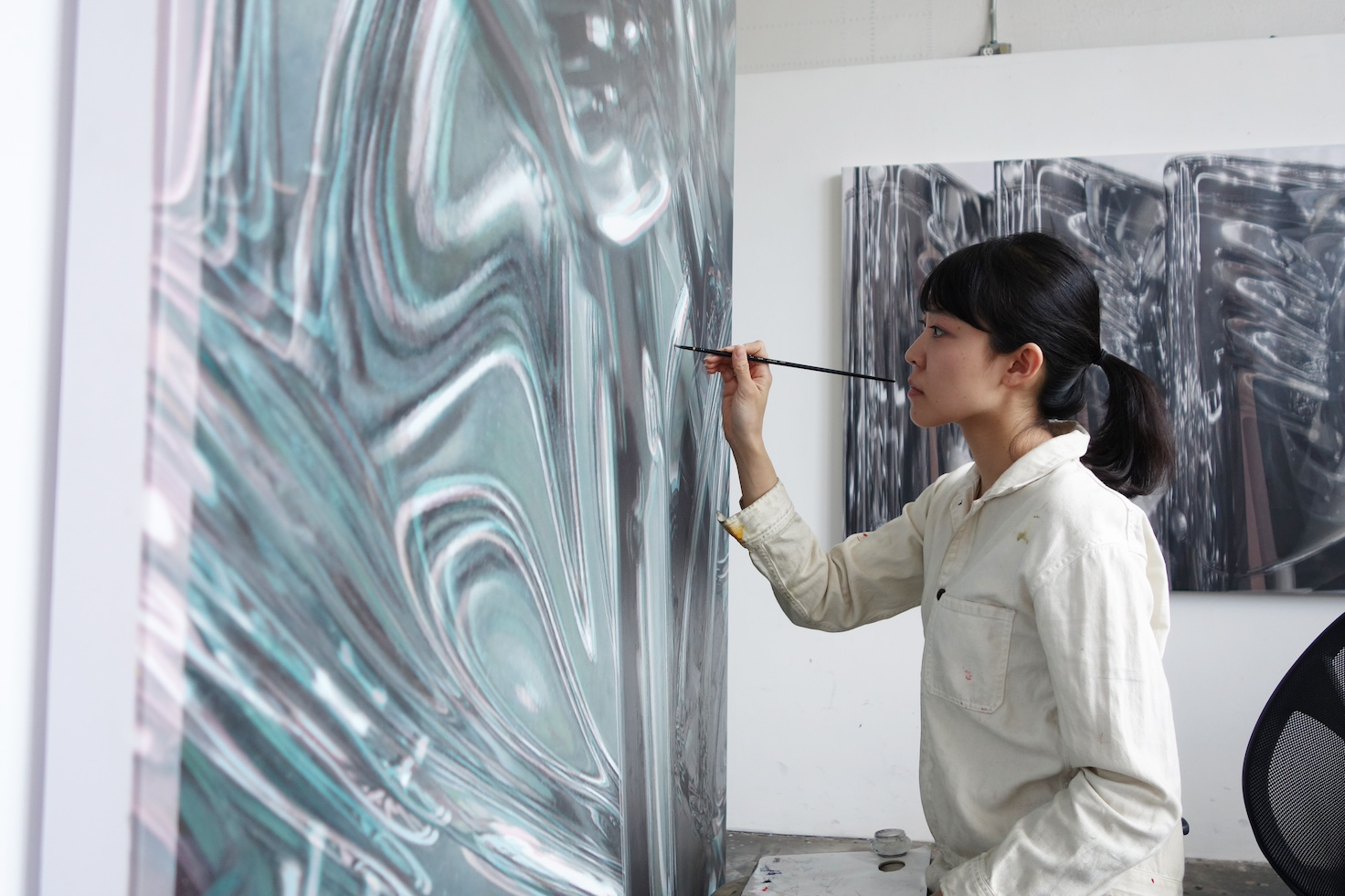
Ai Makita is a Tokyo-based painter whose work explores the border of artificial and natural, drawing inspiration from the relationships between human technology and the sublime. Makita received an MFA from Tokyo University of the Arts in 2013, as well as an MFA from Tokyo Gakugei University in 2010.Recent exhibitions includeForm and Matter,Tokyo 8min, Tokyo (2025);A Thousand Ways to Object-hood, Yu-Hsiu Museum of Art, Taichung (2025);The ComingWorld 2025–2075, GYRE Omotesando, Tokyo (2025);人工的神々–Man has, as it were, become a kind of prostheticGod, PARCEL, Tokyo (2024);Prosthetic Gods, The Some-thing Machine, New York (2024); and Interspecies, Mitsu-koshi Contemporary, Tokyo (2024). She has participated in residencies at The Fores Project (London), ART CAKE (NewYork), Residency Unlimited (New York), and the Varda ArtistResidency (Sausalito). Makita’s works are included in the collections of the Museum of Tokyo University of the Arts, Chiba Bank, and the Takahashi Collection.
About Metabolizing Machine

Metabolizing Machine was Ai Makita’s first solo exhibition at Baert Gallery and a pivotal presentation within her ongoing practice. Developed over more than a decade, the body of work traces its origins to the aftermath of the 2011 Fukushima nuclear incident—a moment that confronted Makita with the alarming truth that human-made technologies can evolve beyond the control or comprehension of their creators.
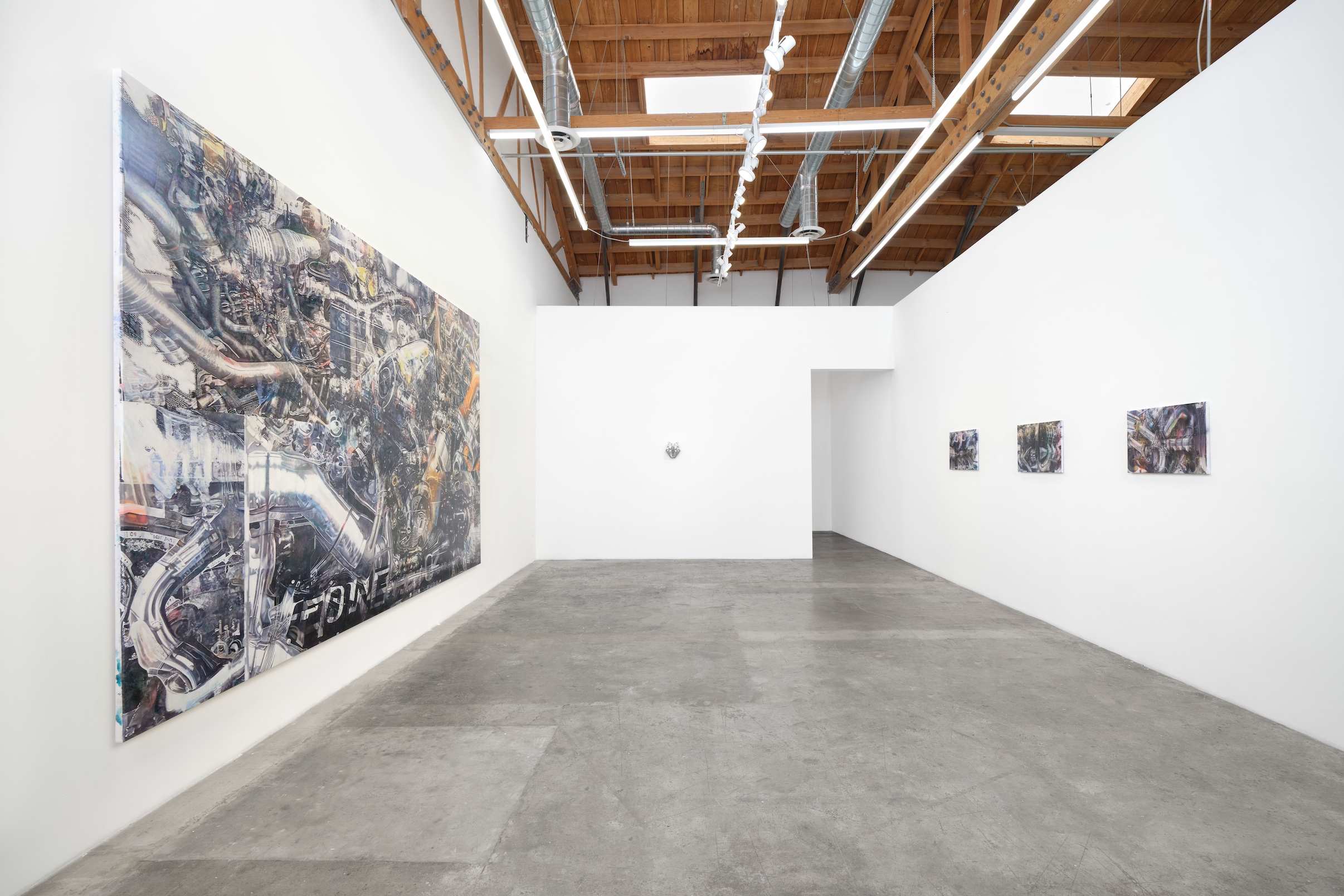
In this series, Makita visualizes the unsettling possibility of machines morphing into living organisms, translating collective anxieties about technological overreach into vivid, biomorphic paintings. The exhibition’s title draws from Masahiro Morioka’s 2023 essay Artificial Intelligence and Contemporary Philosophy, which reflects on philosopher Hans Jonas’s theory of “metabolism” and its implications for modern machine society. Jonas’s distinction between living beings and artificial life—the presence or absence of metabolism—became a central, generative idea for Makita as she explored the boundary between the mechanical and the organic.

Meet SheROCKS 2026 Artist: Brianna Chantel Woodard
Steeped in the cosmic energy of the ’70s and the soulful nostalgia of the ’90s, Brianna Chantel Woodard brings a vibrant, time-bending perspective to contemporary storytelling through illustration. Her art is both a tribute to the culture that raised her and a love letter to the people and moments that shaped her. During this Q&A, Brianna opens up about the memories that guide her, the purpose behind her preservation of Black joy, and the powerful ways motion, tradition, and innovation show up in her work.
Q: What continually draws you back to the 70s and 90s, and how do they help you tell modern stories about Black culture and your own lived experience?
Brianna: The ’70s and ’90s were eras that embodied Black expression in its fullest form, through fashion, art, music, and culture. I’m drawn to the vibrant colors and cosmic energy of the ’70s, while the ’90s carry a nostalgic warmth for me as a ’90s baby. My art becomes a visual manifestation of everything that shaped me. When I tap into these eras, I’m revisiting memories, honoring my family, and celebrating the culture that raised me. By blending these aesthetics with contemporary design, I show how timeless our stories truly are.

Q: What role does cultural preservation play in your creative process?
Brianna: It’s at the center of everything I do. My work is a love letter to the people and moments that built me. I want my art to hold our joy, our everyday beauty, our small victories — the things that don’t always get documented but deserve to be. Preserving culture, for me, is simply honoring the truth that we’ve always been more than what the world tries to reduce us to.
Q: Can you share a moment when you felt your art truly bridged generations?
Brianna: A moment that showed me my art could bridge generations was when my grandma bought the very first item I ever posted on Etsy—a coffee mug with my retro design of a Black woman with an afro. She was so excited. Now it’s her favorite cup. Seeing her cherish something I created reminded me how deeply our stories can resonate across time.
Q: How did your adolescence — shaped by isolation and health challenges — influence your art today?
Brianna: Growing up isolated made me pay attention to what most people overlook. I spent a lot of time alone with my imagination, creating worlds I could escape to. That season taught me intentionality, softness, and resilience. Now, when I create, I’m always thinking about how to bring warmth, comfort, and affirmation into the work.
Q: What does motion symbolize for you when representing Black bodies and Black futures?
Brianna: Movement symbolizes freedom and becoming. It reminds me that we’re not fixed — we evolve, we stretch, we rise. I use motion to show our joy, our fluidity, our refusal to be boxed in. For me, capturing Black movement is a way of saying: we are infinite, and the future bends with us.

Q: What emotions or messages do you hope people carry after experiencing your work?
Brianna: I want people to feel seen and celebrated. I hope people walk away with pride in who they are and a reminder that beauty can be found in everyday moments.
Q: How do you choose which memories, travels, or references to depict?
Brianna: I choose the moments that stick with me. I pay attention to the things that spark emotion. If something feels like it has a story attached to it, I try to honor it visually.
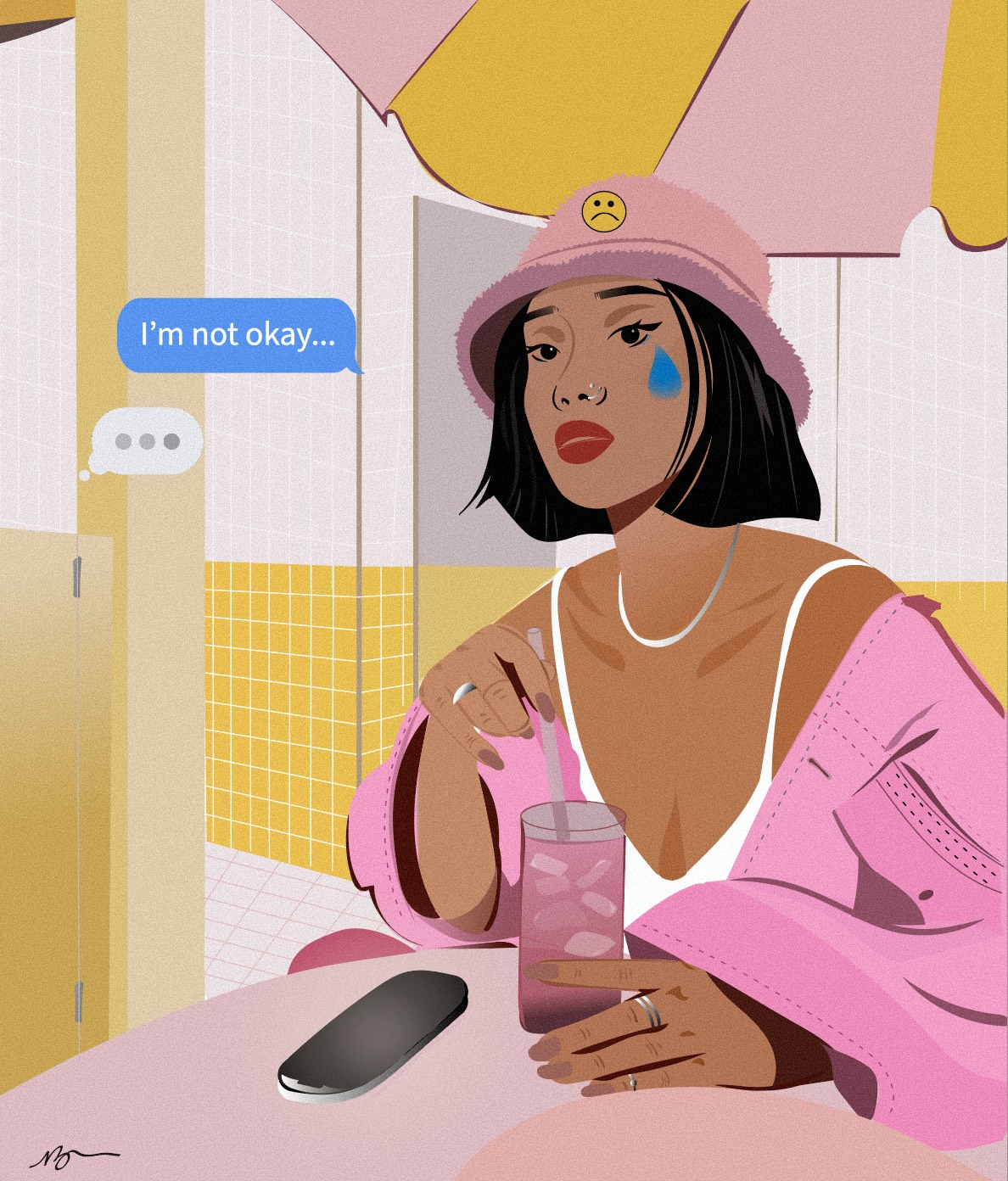
Q: How do you balance honoring tradition while experimenting with new styles or mediums?
Brianna: To me, tradition and innovation can exist in the same breath. I’m constantly exploring new mediums and techniques because I want my work to evolve in a way that mirrors our culture—expansive, layered, and ever-evolving. Honoring tradition grounds me, but it also pushes me to reflect on the present and imagine what comes next.
Rapid fire: One retro color palette you could use forever — go!
Brianna: Burnt orange, mustard yellow, warm brown, and deep berry!
.png)
Q: What are you most excited for audiences to feel or discover at your March 2026 showcase?
Brianna: I’m excited for audiences to see the evolution of my work, but also to feel the heart behind it. If someone walks out feeling inspired, affirmed, or a little more connected to their own story, then I’ve done my job.
.png)
Growing Our Impact: The State of Fem Art Gains Fiscal Sponsorship
We’re excited to announce a major milestone since beginning our journey to amplify the voices and work of women artists. The State of Fem Art is now fiscally sponsored by Fractured Atlas.
This fiscal sponsorship allows us to carry out our mission of putting a lens back on raw talent, resources in the hands of artists, and putting the power of amplification back into the hands of fans to work towards a more equitable art world where women artists are seen, hired, and supported.
With this fiscal sponsorship, we’re ready to take our impact further, and you can be a part of it by donating: https://fundraising.fracturedatlas.org/the-state-of-fem-art
Some of our upcoming projects include:
Creating a centralized creative hub to connect artists to artists, artists to art enthusiasts, and artists to marketplace.
SheROCKS w/ CROC, empowering creative learners through immersive arts programming.
And events and art exhibitions, including our beloved flagship arts showcase —SheROCKS.
The State of Fem Art is a sponsored project of Fractured Atlas, a non-profit arts service organization. Contributions for the charitable purposes of The State of Fem Art must be made payable to “Fractured Atlas” only and are tax-deductible to the extent permitted by law.

SheROCKS with C.R.O.C Artists-in-Residence to Showcase at CASE, Home of Feminist Art Installation 'The Sister Chapel'
Glassboro, NJ - March 12, 2024 - SheROCKS with CROC (Creatives on Campus) proudly announces the upcoming showcase of its "Creative Oasis" artists-in-residence at The Center for Art and Social Engagement (CASE), a program of Rowan University Art Gallery & Museum. The event, scheduled for March 22nd from 6PM-8PM, will mark the culmination of a transformative 3-day residency focused on mindful creativity.

Multidisciplinary artists, Cheyenne Sookoo and Mary Orji are set to present their works following an immersive experience as artists-in-residence during the SheROCKS with CROC "Creative Oasis" program, a safe and inclusive space for creative learners to explore the arts as a career path, nurture their curiosity, develop within a supportive creative community, and gain access to the resources and experiences they need to flourish.
“We’re grateful to partner with The Center for Art and Social Engagement and appreciate Rowan University Art Gallery & Museum for providing the space for our emerging women artists to showcase their creative works,” said Brittanie Thomas and Timea Faulkner, co-founders of the SheROCKS with CROC program in a joint statement.

The showcase is particularly significant during Women's History Month as it takes place at CASE Gallery, home to the permanent feminist art installation from 1978, "The Sister Chapel." The installation is a collective effort by Ilise Greenstein and twelve fellow women artists who she enlisted for the collaborative work, which features standing female role models from history, religion, and myth. The showcase is a continuation of the feminist legacy echoed by the work, as we celebrate the diverse contributions of women artists and continue to create spaces of belonging where they can create history.
.png)
Opinion: Barriers to Creative Freedom, Being, and Living As An Artist
There have been three main barriers [to flourishing freely as an artist]: time, information, and life. In regards to time, having to balance a corporate 9-5 while building my brand as an artist & creative entrepreneur is taxing. Living in a capitalist society creates an incredible challenge for imagining living a life where I can solely create. Instead, I adapt by creating balance in my life to make time for working to survive, and time for creating to thrive. I believe one of humanity’s biggest challenges is time. I’m sure I’m not alone in wishing I had more time. The reality of time on this planet being finite creates an immense pressure of yearning to create your greatest work while you’re here. It is a pressure that demands incredible focus, but also adequate room to live. You need to live in order to have something to say in your work, which is another thing that needs to be slotted into this balancing act that we’ve become subjected to.
When it comes to information, the ideal is the old adage, “if you knew better, you’d do better.” One side of the current issue surrounding information is transparency. There is information that is gatekept and considered taboo that can be incredibly helpful, and simply life-changing for young creatives–such as salary, rates, fundraising, pitching, and other aspects relating to the business side of the art industry. Having transparent access to such fundamental and crucial information would give young creatives an extreme advantage in navigating their paths within this industry. On the other hand, we face information overload. The internet is a powerful tool, but because of it, we have direct access to a vast amount of resources (blogs, YouTube channels, podcasts, newsletters, ebooks, social media, nonprofits, the list goes on.) While most of these resources work to inform and amplify the voices of young creatives, it can be difficult in deciding what is true, where you belong, and what is necessary to you. It is simply overwhelming. Information is only useful when it is digestible. Over the years, I have joined many different communities, subscribed to many different newsletters, and followed many different pages–but I haven’t found many that made me feel like I truly belong. I didn’t feel like they spoke to me on a level I could understand, especially within the art world. The creative professional world has done a decent job in helping all types of creatives, but I think the art world has a long way to go in developing communities and providing information and resources that are easily digestible and not intimidating.
And then there is life. In all of these websites, YouTube channels, blogs, podcasts, social media pages, etc no one really talks about how to actually deal with this roller coaster of life while trying to create. There is clarity in movement, but it gets complicated when figuring out how to move. We see inspirational quotes about not giving up, but when life throws a curve ball how does one still continue their pursuit? If you’re a full time artist or creative, you need to create work to live– but you also need to live to create work. If you’re in a stage where life is knocking you down, how can you possibly create? And if you don’t create, how can you possibly survive? Life is truly a balancing act.

15 AAPI Women Artists You Should Know
We've curated a list of 15 AAPI Women Artists You Should Know:
#1 Actress, Lana Condor
#2 Visual Artist, Christine Sun Kim
#3 Poet & Writer, Jenny Zhang

#4 Designer, Rei Kawakubo
#5 Actor, Writer, Producer, Mindy Kaling
#6 Singer & Songwriter, Mitski
#7 Visual Artist & Animator, Uzumaki Cepeda
#8 Actress, Rapper, & Comedian, Awkwafina
#9 Designer & Sculptor, Maya Lin
#10 Singer, Rina Sawayama
#11 Visual Artist, Yayoi Kusama
#12 Musician, Michelle Zauner
#13 Actress, Maitreyi Ramakrishnan
#14 Artist, Sue Tsai
#15 Actress, Park Run Bin

Are We Really Doing Better by Women in the Arts?
On January 7, 2018, women made history in the arts community. The internet was ablaze with talk of Oprah Winfrey running for president after her Cecil B. DeMille Award acceptance speech went viral. Many attendees at the Golden Globes wore black to support the #MeToo movement.
Reports in the media hailed the event as a triumph for women, but was this really the case? In that year, there were only four female nominees for the Golden Globes. According to women and Hollywood, the 325 nominees for the 2022 awards were almost entirely male (91.1%). There were 29 nominees, but only nine were women, and only three were women directors from traditionally underrepresented groups who took home awards.
It is our duty to work towards a more just and equitable industry. This is especially true in the arts and entertainment fields, where discrimination is still common due to deeply ingrained cultural and social norms. Let’s talk about the current situation of women in the arts and call attention to the gaps that still exist. We will continue to emphasize the role of women in the arts, and we'll talk about how you can get involved. We're hoping this helps you understand the gravity of why advocacy and allies for women artists is critical and moves you to action.
How Have These Disparities Persisted for So Long?
Since the early days within the arts, women have been working diligently in various capacities. Yet, they continue to face disparities in pay and recognition. Researchers at Williams College recently looked at the collections of the most important art museums in the United States. They found that only 13% of the artists in those collections were women. But according to information from the job site Zippia, about 55% of artists who work in the museum are women.
This is a problem that needs to be addressed. Art spaces should have collections representative of the women who are also working in those museums. We need to have more discussions about the role of women in the arts and how to best support them from the curators to the artists. This includes encouraging girls and women from a young age to pursue an artistic career. By raising awareness around these issues, we can progress toward a more equitable future for women in the arts!
What Are the Disparities in the Arts and Entertainment Industries for Women?
According to FORBES, Between 2008 and 2019, an estimated $196.6 billion was spent at art auctions, but only $4 billion went to women artists.
Men largely dominate the arts and entertainment industries. This is true not only for actors and directors but also for stage managers and production assistants. As a result, women face many disadvantages within these industries. These disadvantages can dramatically impact their careers - even when they reach the top levels. Lack of visibility is one of the main problems women face. This is because women are often underrepresented in the media, reviews, and ratings.
Gender bias and sexism are also big issues, as women often experience discrimination and inequality. However, there's still a long way to go before parity is achieved in the arts. We must continue working hard to achieve it, starting with awareness and understanding.
The Strides Being Made by Women in the Arts
The world of the arts is complex and diverse, and it's no wonder that women have had a hard time breaking through the glass ceiling. However, there's been some progress made in recent years. The Center for Women in Television and Film reports that women have made great strides in the entertainment industry, with more women working in behind-the-scenes roles and more female artists achieving mainstream success.
Women comprise most professional art museum staff; but despite recent gains, they remain underrepresented in leadership positions. Again, there is still a lot of work to be done. The importance of women in the arts cannot be overstated. They have been essential in shaping our society and culture for generations.
They continue to make valuable contributions to art, dance, music, literature, and we need them more than ever. It's time we started taking action and supporting women in the arts. Women need more opportunities to get exposure and gain recognition for their talent. We need to support their work intentionally so they can make even more progress in the future.
The Challenges That Remain for Women in the Arts
The arts is important for both individuals and society as a whole. Art can help us express ourselves in ways that are unique and can offer therapeutic benefits. However, many challenges remain for women artists.
- The National Museum Women's Association reports that from 2005 to 2015, the percentage of museums headed by women increased from 32% to 47.6%, though this increase was concentrated among the smaller institutions.
- According to Billboard. women are undervalued in the music industry and do far too much work. 57% of those polled work more than one job, 24% work 40-51%, and 28% work more than 50%. Approximately one-third of those polled earn less than $40,000 annually, and nearly half believe they should be further along in their careers.
- One of the hardest things for women to do in the design industry in 2022 is to find strong role models. According to the National Museum Women's Association, Women make up a majority of professional art museum staff; despite recent gains, they remain underrepresented in leadership positions.
.
To make real progress, we need to be more aware of the challenges that exist and take action to address them. We need to support women artists and help them reach their full potential. This will be challenging, but it's essential to see real change in the arts industry! Thankfully, people are working collectively to change these things.
The arts are a part of our history and culture and should be inclusive for everyone. Arts are a powerful medium for expression and can help break down barriers. Unfortunately, women have been largely left out of the arts scene -more specifically in equal pay and opportunities. That's why it's so important that men play a significant role in advocating for women in the arts. Here’s how men can help to support women artists.
- Realize that there is no one cause of inequality but many. Do your research and learn the space you wish to influence.
- Address toxic masculinity in creative and work spaces.
- Spread the word about and pay for the work of women artists.
- Cultivate the talent of skilled women artists by offering opportunities.
- Work alongside women in the arts. If we work together, we can give everyone a place to share their ideas and make sure that everyone can also enjoy great art.
The art world is full of women who have worked hard and succeeded at the highest levels. These women are leaders in their fields, reaching new heights every day. But we still have a long way to go before women are treated equally and fairly. Despite all the progress we've made as an industry (for better or worse), there's still more work to do regarding gender parity in Hollywood and beyond—and now more than ever, we need your help! We would love to hear from you!
If you’re a woman artist, let us know how we can support you by taking our survey. If you want to learn how to support women artists, join the conversation by subscribing to The State of Fem Art podcast.

Bisa Butler Creates Portrait Quilts That Shares the Black Experience
This Women’s History month, we commissioned artist Aniko Aliyeva to celebrate the work of incredible women in visual arts.
Today, we recognize artist Bisa Butler. Her intricate portrait quilts tell the stories of the Black experience in technicolor. Each fabric is carefully selected as she translates historical photos into brilliant works of art.
The fiber artist has shared it can take hundreds of hours to complete just ONE quilt.
In an interview with Print Magazine, Bisa shared, “Quilts are tombs of history. Printed fabrics give you a date and time. If I’m using oranges and blues and dayglow flowers made of polyester, you know that fabric is from the 70s because they’re not making fabric like that anymore.”
The New Jersey native holds her BFA from Howard University and a Master’s in Art and Education from Montclair State University.
This April, she will be honored by the American Folk Art Museum (AFAM) alongside Faith Ringgold and Brian Donnelly (KAWS) for their 60th Anniversary Gala at Gotham Hall in New York.

The #SOFemART Gallery, Podcast, and Intention
On March 27, 2021, Love Life Media revealed “The State of Fem Art” (SOFA) virtual art gallery and 360 experience designed by Fatimah “Sattom” Al Asad and curated by event founder Timea Gaines to recognize visual artists being spotlighted at this year’s SheROCKS event. The experience was crafted to commission, collaborate, and spotlight women artists and boldly declare our commitment to helping women artists and creatives be seen.
“We heard so many stories about women artists and entrepreneurs who had succeeded after attending SheROCKS event. We learned of the partnerships and relationships they established through the event. We also received numerous requests to do more. So we decided to create a space to continue the conversation, but more importantly to disrupt the industry in a way that levels the playing field for women in male-dominated industries,” said Timea Gaines CEO & Founder, Love Life Media.
With the SOFA announcement, you can expect media and entertainment, events, workshops, resources, tools, grants, collaborations, and a podcast set to feature women artists and creators.
Today is the first official public viewing of the SOFA art gallery and the podcast cover, which was created to highlight women artists who were disruptors in their own right.
On the podcast cover, you will see Frida Kahlo, Yayoi Kusama, Faith Ringold, Aretha Franklin, Audrey Hepburn, Norma Merrick Sklarek, Zaha Hadid, Rei Kawakubo, Madeline Anderson, and Debbie Allen. The first episode will provide a closer look at why each artist was chosen for the cover and their inspiring stories.
To receive the latest news about #SoFemART and the podcast launch, make sure you’re following @SoFemArt on Instagram.

E03 – Adrianne Ramsey | Being an Art Curator & How to Get Paid as An Artist

E03 - Ariel Adkins | The Fusion of Art, Culture, and Social Media

E01 - Meet The Artists- SheROCKS 2022 (Part I)

E03 - Autumn Breon | Art & Advocacy, Equal Pay, and NFTs

